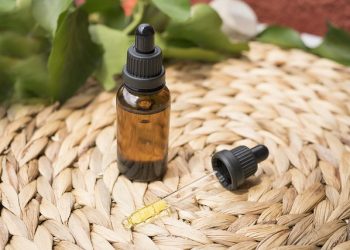Any medical procedure requires careful attention. Everything must be sterile and thought out down to the smallest detail. And if we are talking about blood collection, the needle size is one of the most important aspects! Needles for blood collection come in different sizes and are suitable for different purposes. We encourage you to learn more about this aspect to avoid potential mistakes! It is because choosing the right size can affect the blood flow. It also affects the patient’s sensation and the sample quality.
Healthcare professionals need to understand how to choose the right needle gauge to ensure patient comfort and cooperation! Of course, it all depends on the specific situation, but most importantly, it affects the success of the blood draw and patient satisfaction. So, let’s take a look at all the nuances. We will help you choose the right needles for each specific case. This valuable information will come in handy even for professionals.
The Basics of Blood Draw Needles and Needle Gauge
Understanding blood collection needles is essential for healthcare professionals performing phlebotomy. The right choice directly impacts patient comfort and the procedure’s effectiveness. Several factors come into play when selecting the appropriate needle size. It refers to the needle diameter used during blood collection. Here’s a breakdown of the basics:
- Understanding Needle Gauge: This refers to the size or diameter of the needle. It’s important to note that the gauge is inversely related to the size. The smaller the gauge number, the thicker the needle. Standard needle gauges for blood draws include 21, 22, and 23. The first one is a thicker one for patients with healthy veins. It is also suited for collecting larger blood volumes. 22-gauge is a medium-sized needle suitable for most adults and routine blood draws. A 23-gauge is a thinner one often used for pediatric or elderly patients with more fragile veins.
- Choosing the Right Needle for the Patient: Several factors affect the selection. These are the vein size, condition, and blood required. Using a larger gauge can reduce pain. It may also slow down the blood flow. Conversely, a smaller one can draw more blood faster. It may cause discomfort.
Understanding the various types and their gauge ensures successful blood collection. It also provides minimal discomfort for patients.
Blood Draw Needle Types: Choosing the Right Needle for Each Procedure
Selecting the appropriate needle for a blood draw ensures patient comfort. It also reduces complications and obtains quality samples. Understanding the various blood collection needle types helps healthcare professionals make informed decisions. They are generally based on the needs of each procedure and patient.
Here’s a guide to the most common blood draw needle types:
- Straight Type (21-23 Gauge): This standard needle is generally used in routine venipuncture. It is available in different gauges (21-23), with smaller numbers indicating thicker needles. This is ideal for adult patients with healthy veins. These types are also suitable for collecting larger volumes of blood when required.
- Butterfly Needle (23-25 Gauge): This type is also called a winged infusion set. This is a needle that has flexible wings. They allow for greater control during venipuncture. It is commonly used for pediatric patients, elderly patients, or those with smaller, fragile veins. Preferred for more delicate procedures, offering a higher level of precision.
- Hypodermic Type: This is primarily used for injections. In some cases, a hypodermic needle is generally utilized for drawing blood. This is mainly for difficult venous access. Such types are available in various gauges. It depends on the specific procedure and patient needs.
- A Syringe with Needle: Such a method is typically used when veins are difficult to access. It is also crucial when a vacuum collection system is unsuitable. The blood is generally drawn into a syringe and then transferred to the collection tube.
Choosing the right blood draw needle types for each patient is vital. It ensures a successful and comfortable procedure. Proper needle selection based on gauge and type reduces discomfort and maximizes sample quality.
Smallest Gauge Needle: Minimizing Discomfort for Patients
The smallest size needle is often recommended for patients susceptible to pain. It also suits those with small, fragile veins. The needle size refers to the diameter of the needle. A higher gauge number indicates a smaller, thinner one. Selecting the appropriate size is essential. It helps to ensure patient comfort and the procedure’s success.
Here’s a guide to the smallest gauge needle options and their applications:
- 25-Size Needle: This is one of the most petite sizes available for blood draws or injections. It is ideal for patients with very delicate or small veins. They are pediatric or elderly patients. Such a needle minimizes discomfort. It may result in slower blood flow. This makes it less suitable for drawing larger volumes of blood.
- 26-Gauge Needle: Such size is often used in specialized procedures. It may be insulin injections or for drawing minimal blood volumes. Thin enough to significantly reduce pain for sensitive patients. Not commonly used for routine venipuncture due to its limited blood flow capacity.
- 27-Size Needle: This is frequently used for cosmetic injections. In some cases, it is generally utilized for blood draws requiring minimal invasiveness. This needle provides the highest level of comfort for patients with extreme sensitivity. It is best for cases with only a tiny sample. This offers limited flow.
Healthcare professionals must select the smallest gauge needle. They can prioritize patient comfort without compromising the effectiveness of the procedure.
Blood Draw Needle: Key Factors in Selecting the Right Needle
Choosing the appropriate blood collection needle ensures a smooth, efficient procedure. It also minimizes discomfort for patients. Several factors are essential in determining the right needle for each specific situation. Here are crucial considerations when selecting blood drawing needles:
- Needle Size: This point refers to the diameter. Smaller numbers indicate larger needles. For typical blood draws, 21 to 23-gauge ones are most commonly used. Thinner sizes (like 23-25) may be necessary for patients with fragile veins. Thicker gauges (like 21) allow for faster blood flow.
- Patient’s Vein Condition: A standard blood test needle (21-gauge) is often ideal for people with robust, healthy veins. Patients with smaller, more delicate veins are the elderly or children. They may require thinner blood collection needles (22-25 gauge). They help to minimize discomfort and avoid damage.
- Type of Procedure: Routine venipuncture typically uses straight needles. More sensitive procedures may require the use of a butterfly blood draw needle. It offers more control and precision.
- Volume of Blood Required: Large-volume blood is necessary for multiple tests. A larger needle (e.g., 21-gauge) ensures efficient blood flow. Smaller volume tests are fingersticks or minor blood sampling. A thinner needle may be sufficient.
- Patient Comfort: Using a smaller size needle can reduce pain. It may also slow the blood flow, especially if a significant amount is necessary.
Considering these factors helps healthcare professionals select suitable blood draw needles. They ensure a successful and comfortable procedure for patients.
Needle Gauge in Phlebotomy: What You Need to Know
The needle size is crucial in phlebotomy. It directly affects patient comfort, blood flow, and draw success. The gauge refers to the thickness of the needle. Smaller numbers indicate larger ones. Healthcare professionals must understand how to select the correct needle gauge. It must be suitable for each patient and procedure. Here’s what you need to know:
- Understanding Needle Size: This represents the diameter. Sizes range from 18 to 27 gauge in phlebotomy. A smaller size number is 21. It means a more extensive, thicker needle. A higher gauge number (like 25) indicates a thinner one. The size affects the speed of blood collection and patient comfort.
- Standard Blood Draw Needle Types: 21 is a commonly used size for routine blood draws. It offers a good balance between the speed of blood flow and patient comfort. This makes it ideal for adults with healthy veins. The 22 gauge is slightly thinner than the 21 gauge. This needle is suitable for patients with smaller veins. Older adults or those who require minimal discomfort during the procedure. 23-Gauge is generally used for more delicate veins. It is often in pediatric or elderly patients. It causes less pain but may take longer to draw blood.
- Factors Affecting Needle Selection: The condition of the patient’s veins is the primary factor. It is important to choose the needle size. This is generally preferred for patients with fragile or hard-to-find veins. The volume of blood needed also influences the decision. Larger gauges (thicker needles) are ideal for collecting larger blood samples more quickly.
- Patient Comfort: A higher needle size can help cut discomfort during the blood draw. This is mainly true for patients with needle sensitivity.
Selecting the appropriate needle gauge ensures successful blood collection. It strikes a balance between patient comfort and procedure efficiency. To select the most appropriate blood drawing needle size, review several options. You will then be able to choose the one that is most comfortable for you!







